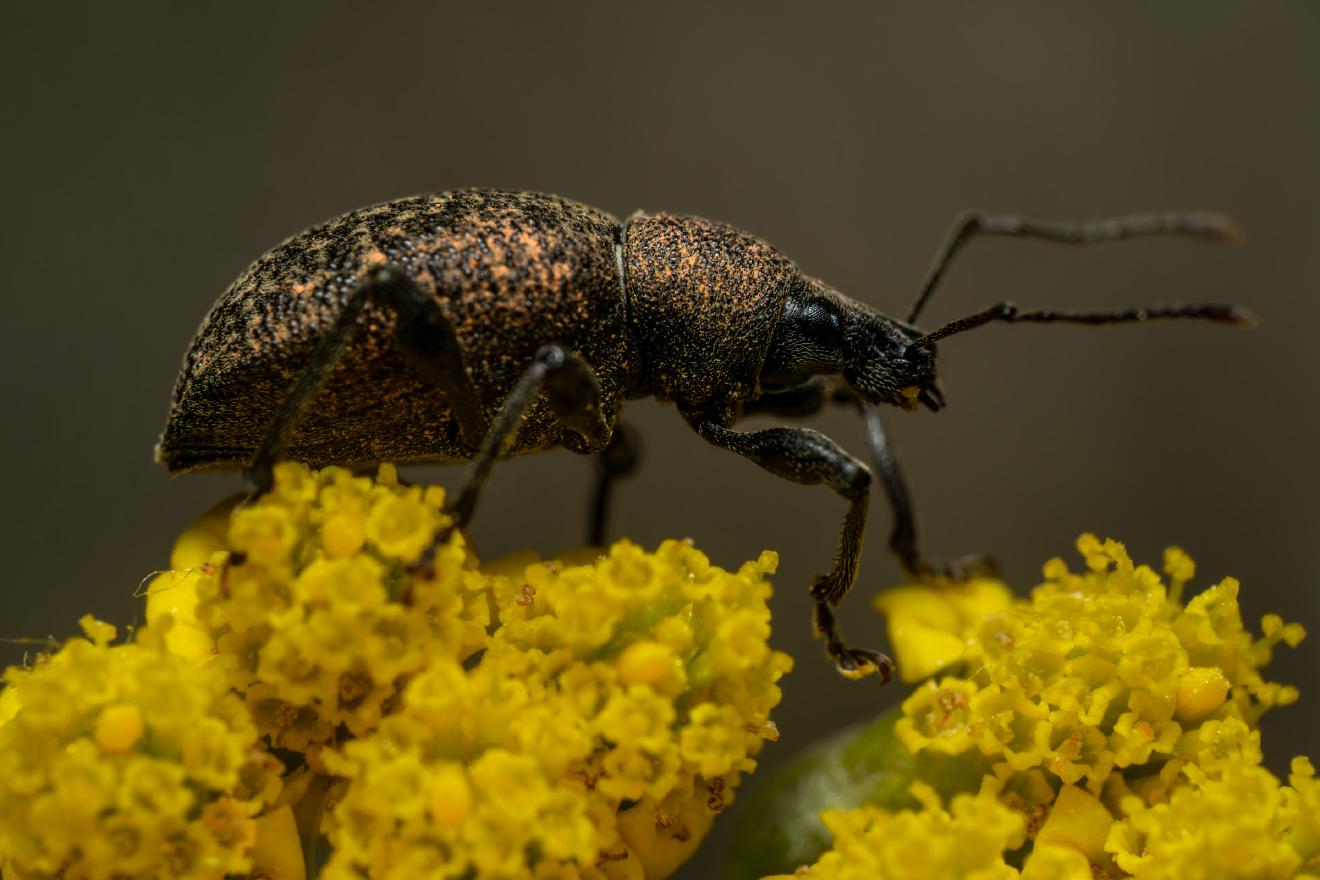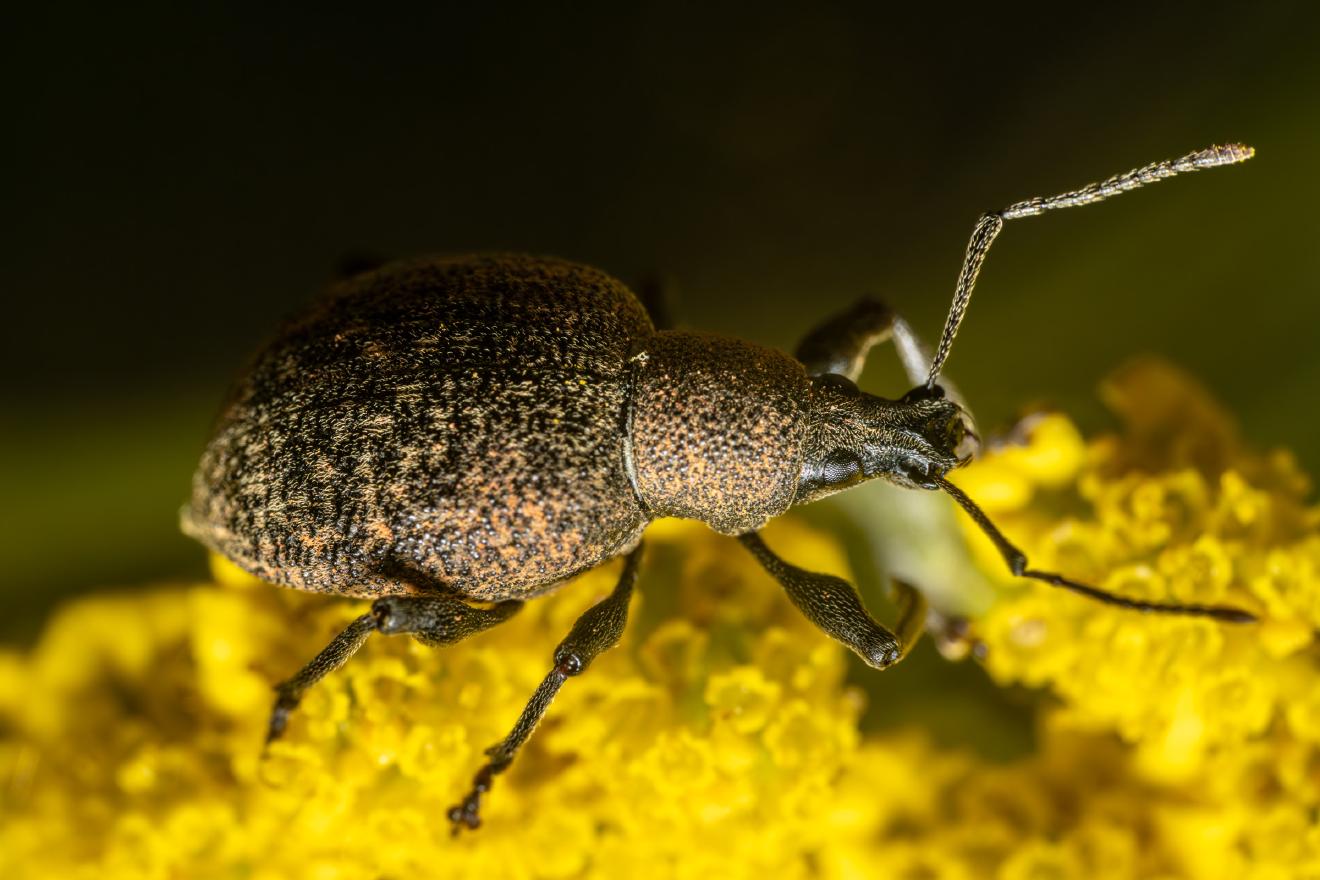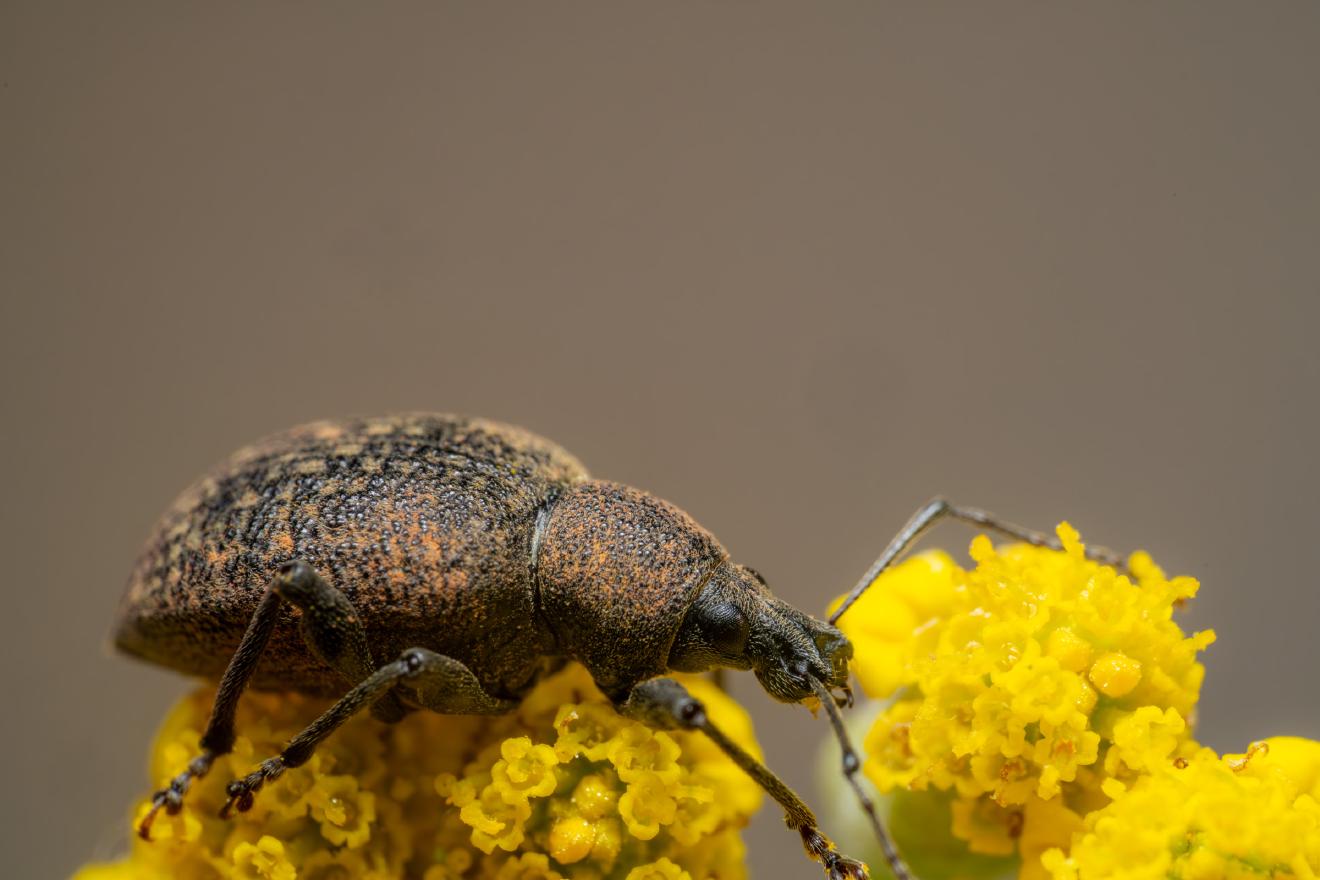Black Vine Weevil
species of family “True Weevils“
1 species
The black vine weevil is a matte black, flightless adult weevil that feeds at night on the edges of leaves, causing notched margins. It primarily damages broadleaved evergreen plants but can also attack a wide range of garden plants. Female weevils can reproduce parthenogenetically, with fertilization required to produce males. The larvae, or grubs, live below the soil surface and feed on roots, causing damage to herbaceous plants in containers. Control methods include using sticky barriers on plant trunks, manually removing adults at night, and utilizing entomopathogenic nematodes.



Overview#
The adult weevil is matte black with fused wing covers, and is unable to fly. It feeds at night on the outer edges of leaves, causing the leaves to have a notched margin. Broadleaved evergreen plants such as Camellia, Rhododendron, Euonymus and Bergenia are particularly prone to damage, although a wide range of different garden plants are susceptible to attack. Female weevils have the ability to reproduce parthenogenetically with fertilisation of eggs required to produce males, though no males have been observed. This form of parthenogenesis is known as thelytoky. Grubs grow up to 1 cm in length, have a slightly curved, legless body and are creamy white in colour with a tan-brown head. They live below the soil surface, and feed on roots and cambium at the base of trunks. They mostly cause damage to herbaceous plants, particularly those growing in containers, where root growth is restricted. Severe infestations can result in complete root destruction and hence plant death.
Host plants#
Their host plant genera include:
Controls#
The soil dwelling grubs can be difficult to control with chemical insecticides, and products showing some efficacy, such as chlorpyrifos, have been withdrawn from many markets, especially garden centres. Besides their environmental benefits, certain ‘cruiser’ entomopathogenic nematode species (see below) have the additional capacity to search for their prey underground. Adult weevils can be controlled by using sticky barriers on the trunks of affected plants, as the weevils return to the soil each day. Adults can also be manually removed from plants at night when they can be found feeding on leaf edges. Use only a dim torch or candlelight to search by, as they will drop to the ground if startled by bright light.
See also#
Lixus concavus, the Rhubarb curculio weevil
External links#
Media related to Black vine weevil at Wikimedia Commons Data related to Otiorhynchus sulcatus at Wikispecies
The black vine weevil is a matte black, flightless adult weevil that feeds at night on the edges of leaves, causing notched margins. It primarily damages broadleaved evergreen plants but can also attack a wide range of garden plants. Female weevils can reproduce parthenogenetically, with fertilization required to produce males. The larvae, or grubs, live below the soil surface and feed on roots, causing damage to herbaceous plants in containers. Control methods include using sticky barriers on plant trunks, manually removing adults at night, and utilizing entomopathogenic nematodes.
Ancestry Graph
Further Information
Copyright

